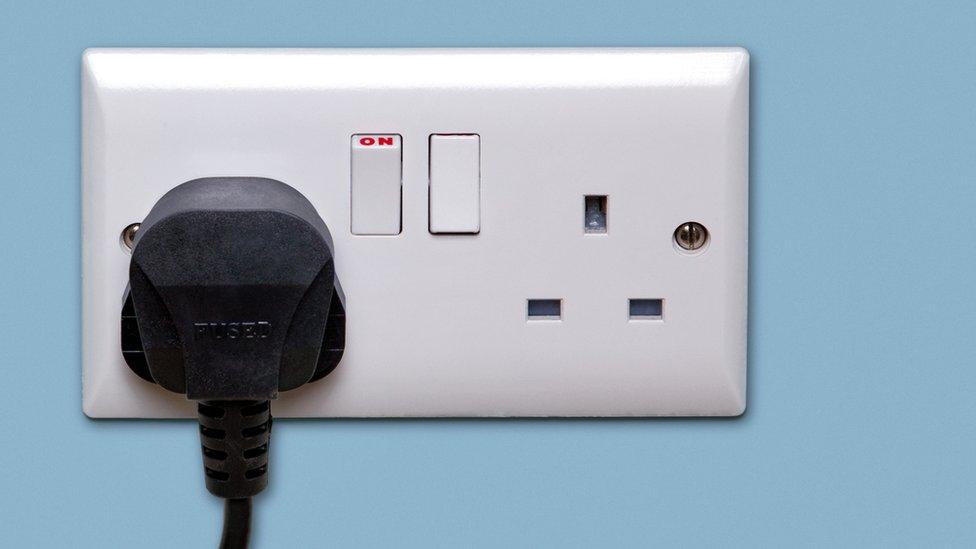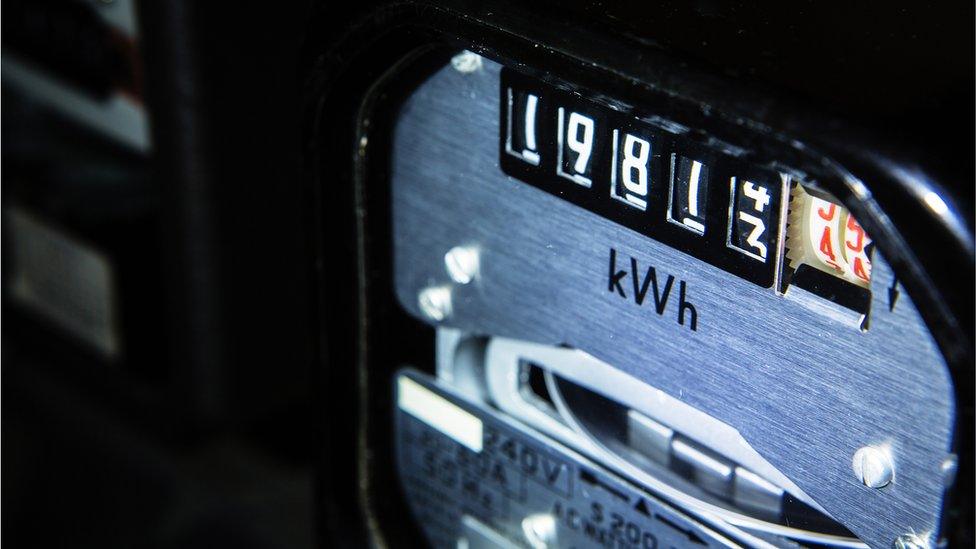Energy suppliers: cracking under the pressure
- Published

Foreigners look to Britain to find out how to run an energy market. Or so I was recently told by a very senior figure in the industry.
The market works, he says, except for the failure of many customers to engage with it, and switch to better value supply contracts.
It's not the feeling you get from inside Britain. Energy companies have been about as popular as banks in recent years.
If you were to ask British energy consumers what foreigners most admire about this country, it's unlikely they would put the Big Six energy suppliers anywhere close to the top of the list.
Prices rocket up with wholesale costs of buying energy, but customers perceive them feathering down when those wholesale markets ease off.
Ridiculed
Politicians of all hues have done nothing to explain why the industry works as it does. They have instead echoed the public and tabloid fury at rising bills.
Few have been willing to admit that it is government action that has also been driving bills up. Those "subsidies" for renewable energy and support for lower income and vulnerable households aren't government subsidies. They're paid for by other customers, through their bills.

Ofgem has itself come under pressure to load on the regulatory pressure. Ahead of the 2015 election, the regulator itself was threatened with closure, and a Labour plan to cap prices.
Then, it was ridiculed by Conservatives as Marxism. Now, something close to that is Tory government policy.
Indeed, if there was one aspect of Britain's economy that foreigners might find is deeply flawed, it is not the energy market, but the failure of successive governments to let those big energy firms plan long-term to secure supply.
Split and solder
This week brought a mighty cracking noise under the strain of the political, public and commercial pressure. Just after ScottishPower announced it has lost a further 120,000 customers through switching, it emerged that SSE was in talks to merge with rival Big Sixer, npower.
The German-owned company has suffered more than most from customer service problems, and recent heavy losses.
The deal splits SSE. The generating and distributing divisions go on as they were, based in Perth, focussed on investment in renewable power. Without the political noise around the retail division, they can reassure investors and lenders that their funds are secure.
They can get on with what they do, and not feel too embarrassed if they make healthy profits. SSE plc also keeps the Irish retail operation, Airtricity. This split only affects the mainland British market.
So the plan is then for SSE's retail division to combine with npower, in a joint venture valuing the Scottish firm at roughly twice that of the weaker partner.
Those shares will then be liquid, and it is open to the German and Scottish owners to sell off shares in the new company.
We don't know what that strategy will be. Nor do we know where it will be headquartered. Or what brands it will use.
Will there be strong supply links with SSE upstream? Before we get any of that, it'll need a chair and a board.
What we do know is that the rationale for the move is to drive efficiency into the joint retail business, and reducing costs. It's claimed that could lead to lower bills.
What they're less keen to point out is a) that could also boost profitability and b) efficiency comes at the expense of jobs - possibly a lot of jobs, where more than 15,000 people are sure to have a lot of overlap.
What we also know is that this is a further departure from an important part of Scotland's economic past. SSE, previously Scottish and Southern Energy, was created from the 1991 privatisation of North of Scotland Hydro-Electric Board.
That was a creation, in 1943, of an interventionist creed, which literally changed the shape of the Highlands. It brought jobs and electricity to the glens and north-west coast, beginning the process of revival and reversing de-population.
Scottish Hydro-Electric plc grew in 1998 by swallowing Southern Electric, which has inherited the nationalised franchise in Southampton. Seventeen years ago, it bought Swalec, formerly the South of Wales Electricity Board, from British Energy.
Watchdog
There may be quite a significant obstacle. The SSE/npower tie-up will require clearance by the Competition and Markets Authority.
With 11.5 million accounts, the joint company is just short of the market share enjoyed by Centrica, consumer branded as British Gas and Scottish Gas.

The competition watchdog would normally take a dim view of dominant players getting together. Dominance is seen as the problem. It's likely the CMA will take a close look.
That process is expected to take a year, which means this substantial demerger and merger will - if approved - complete next winter.
Costly churn
The message to the CMA will be that things have changed, and will continue to change. For a start, there's the presence of newcomers to the energy market. Now around 60 companies are battling for a piece of a shrinking market, with the requirement to cajole their customers into reducing their consumption.
SSE cites 500,000 switchers across the British market in September alone. That churn is costly, and it tends to drive down the Big Six shares.
ScottishPower this week explained its declining customer base with a claim that it is prioritising loyal customers over the costly business of poaching new ones. It boasts of doing what it can to move people off the Standard Variable Tariff (which it wants to abandon) and on to new contracts, selling energy like annual insurance renewal.

Whereas the Big Six used to have nearly all the market, it now has close to 80%. With that level of competition, it does make you wonder if this is a market where the Scottish government can or should fulfil its pledge to set up another energy provider. What more could it do, and at what cost or financial risk?
This also makes the split clearer between energy retailers and energy wholesalers, including those who generate and distribute. Part of the thinking behind the Big Six was to integrate from gas field and wind turbine through the cables and pipes, and on into your home and business.
Security of supply mattered at a time when Russia could turn a few valves on its border and switch off much of Europe's gas supply. That matters less these days.
Sources of gas have been diversified. Increasingly the retail suppliers rely on forward contracts in the wholesale market.
Customer-producers
What has also changed, and continues to change, is the way we use electricity. The plug-in car is here, and may quickly become a bigger feature of transport, probably requiring a big lift in generating capacity. A heating revolution can be expected to follow.
The Internet of Things should make it easier to use energy efficiently. Smart meters should already be doing so. Households and businesses can generate their own power, helped by the cost of solar panels.
The market is turning around to make customers into part-time producers. Homes may also include power storage technology, which they can sell back into the grid when the price is right.
The SSE/npower pitch is that a big company will have the scale to develop contracts which respond to this more complex energy market of the not-too-distant future.
If it's right, it doesn't bode well for the market minnows, possibly including the Scottish government and a few local councils, which are fighting for a single percentage share.
That pressure could move things back to a few dominant players. Imagine the market power if a game-changing Apple or Google of energy supply were to emerge.